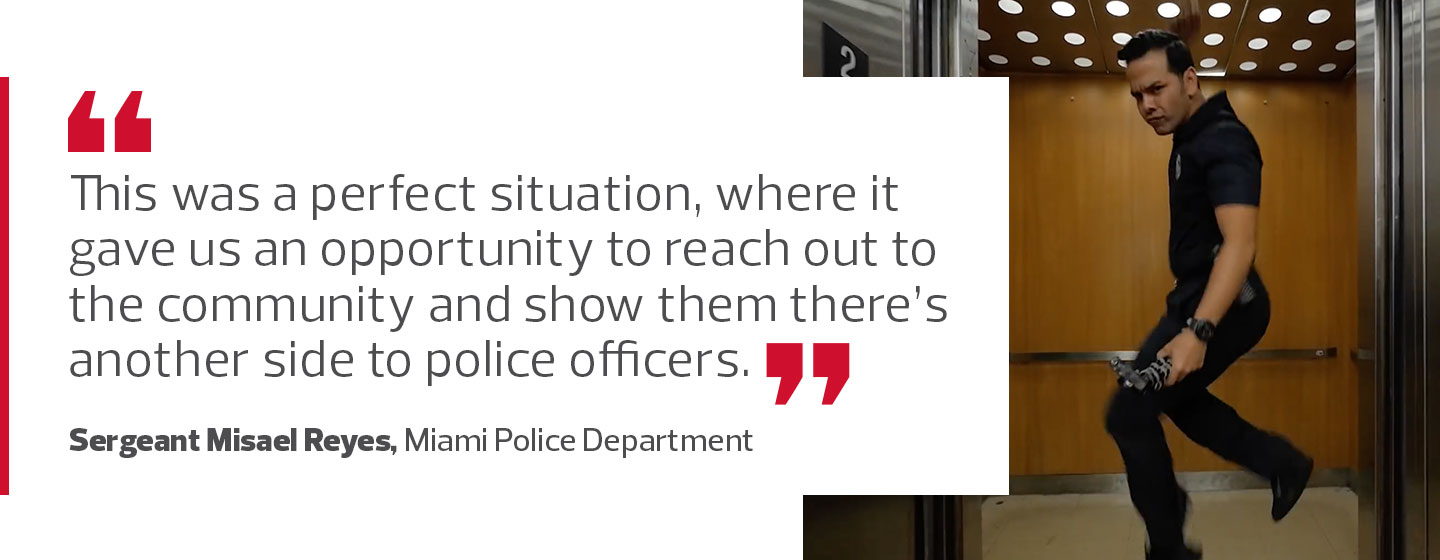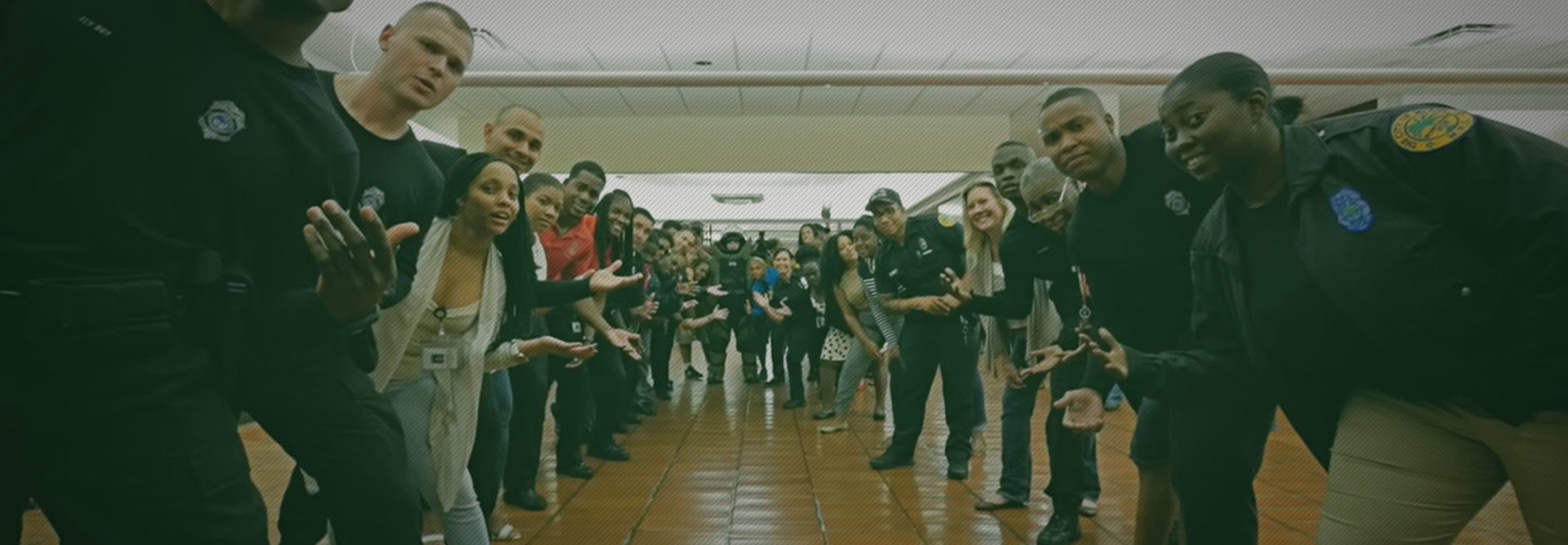The Story Behind the Miami Police Department’s Viral Video Victory
With a two-minute video, the City of Miami Police Department tripled its level of Facebook likes.
The department created a social media unit late last year to give police a direct link to the community they serve. Since then, a small team has been busy creating original video content for the department’s Facebook page and YouTube “vlog” (a term that combines the words “video” and “blog”). Many of these videos give viewers public safety tips or provide a behind-the-scenes look at department operations, but the most popular — by a wide margin — is the “Miami Police Running Man Challenge” video uploaded in May.
For those behind on their Internet memes: The Running Man Challenge was popularized earlier this year by two University of Maryland basketball players, and requires that participants film themselves doing a version of the “running man” dance to the ’90s hip-hop song “My Boo.” As with the 2013 “Harlem Shake” craze, amateur dancers quickly got creative — busting moves in offices and locker rooms, on public transportation, and even while wearing Tyrannosaurus rex costumes — and it didn’t take long for law enforcement agencies to get in on the fun.
But Miami police took the challenge to another level. The department’s video follows officer Nick Perez, a member of the social media team, as dispatchers, officers in line at the cafeteria, and even the chief try to convince him to create a Running Man Challenge video by showing off their moves. By the end, Perez gives in, and dozens of employees shake their stuff, including one officer doing his best in full bomb-squad gear, a female officer salsa dancing as the music switches to Gloria Estefan’s “Conga,” and Perez himself displaying his surprisingly acrobatic break-dancing skills.
Overnight, the number of people liking the department’s Facebook page grew from about 11,000 to more than 30,000, and by early June, the video had been viewed more than 9 million times on Facebook.
“We were trying to build our audience,” says Sergeant Misael Reyes, who leads the department’s social media unit and filmed the video. “This was a perfect situation, where it gave us an opportunity to reach out to the community and show them there’s another side to police officers.”
The Heart, Tech and Production Value Factor
“We came up with the idea for the video in the morning, we went out and shot it at noon, and by 2 in the afternoon it was posted,” says Reyes.
Reyes and Perez shot the video during midday so as to catch people on their lunch break, and they brainstormed with others in the department about what elements they should include. The bomb-squad gear made an appearance simply because the department was performing a bomb training exercise that day; Reyes and Perez then sought out salsa dancers to add some “Miami flavor” to the video. They had access to the chief for a total of 10 seconds. “We had one take,” Reyes says. “And he killed it!”
The video is appealing because it’s funny, but also because the production quality is higher than that of most web videos. It’s well-lit, well-framed, and well-edited, with crisp, clear audio. Reyes shot the Running Man Challenge video with a Panasonic Lumix GH4 camera, and Perez often uses a point-and-shoot camera for vlogging. They have some LED lights, some boom mics, and a rolling camera mount for smooth tracking shots, and they edit their footage on MacBook Pros using Final Cut Pro software.
In the 17,000 Facebook comments garnered by the video, people praised the department for its sense of humor, proclaimed the video “THE BEST!!!” and even suggested that Perez appear on “Ellen” or “America’s Got Talent.”
The Benefits of Social Media Engagement for Police Departments
If the Running Man Challenge video sounds silly … well, it’s supposed to be. But that silly, two-minute clip has brought millions of people to the Miami Police Department’s Facebook page, giving police the opportunity to share more serious messages about things like life jacket safety and hurricane preparedness.

“I think every police department has the responsibility to inform the public about what we do, about the resources that are out there, about crime safety,” says Reyes. “Social media gives us the opportunity to do that very easily.”
According to a May 2015 GovLoop guide on social media use, 87 percent of government organizations already have a Facebook page. Of these, 91 percent say the primary objective of their page is to keep the public informed.
Doug Robinson, executive director of National Association of State Chief Information Officers (NASCIO), says that more public agencies are dedicating staff to social media. Also, he says, these organizations are becoming increasingly strategic — using analytics and creating policies to ensure that social media efforts provide a benefit.
“In police departments, you’re seeing more road maps, or the developing of a real social media strategy,” Robinson says. “That’s important, that you actually have a strategy before you start opening this up.”
Reyes says that law enforcement has been slower than the business world to adopt social media, in part due to an “old school” mentality. But, he says, tools like Facebook can actually help return departments to their community policing roots.
“Back in the day, everybody knew the officer, and the officer was there to serve and help them out,” Reyes says. “I think we’ve lost that over the years. Cities have grown, and there has been that disconnect. Social media is giving us those basic communications back, where we can talk to people directly.”









